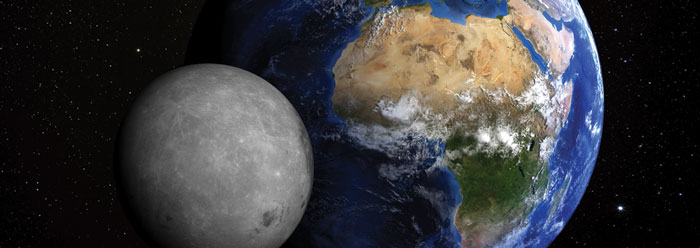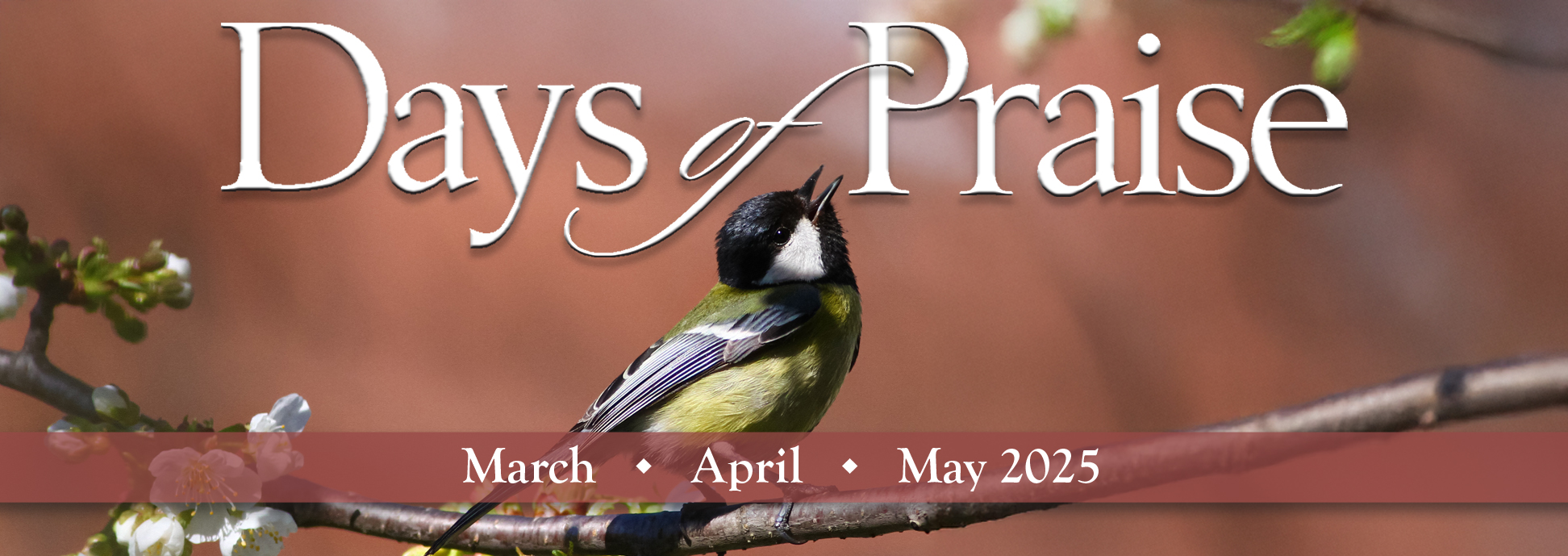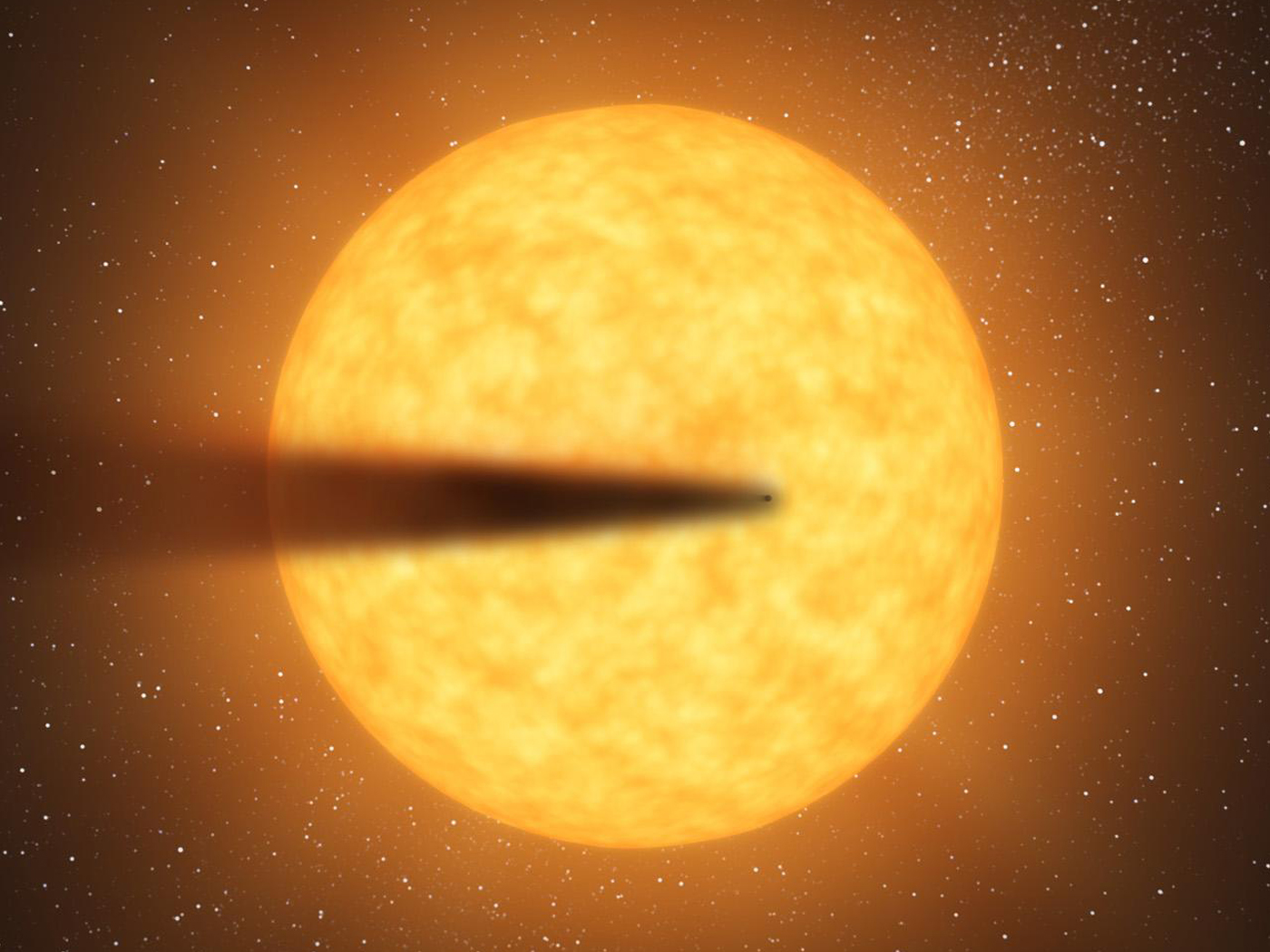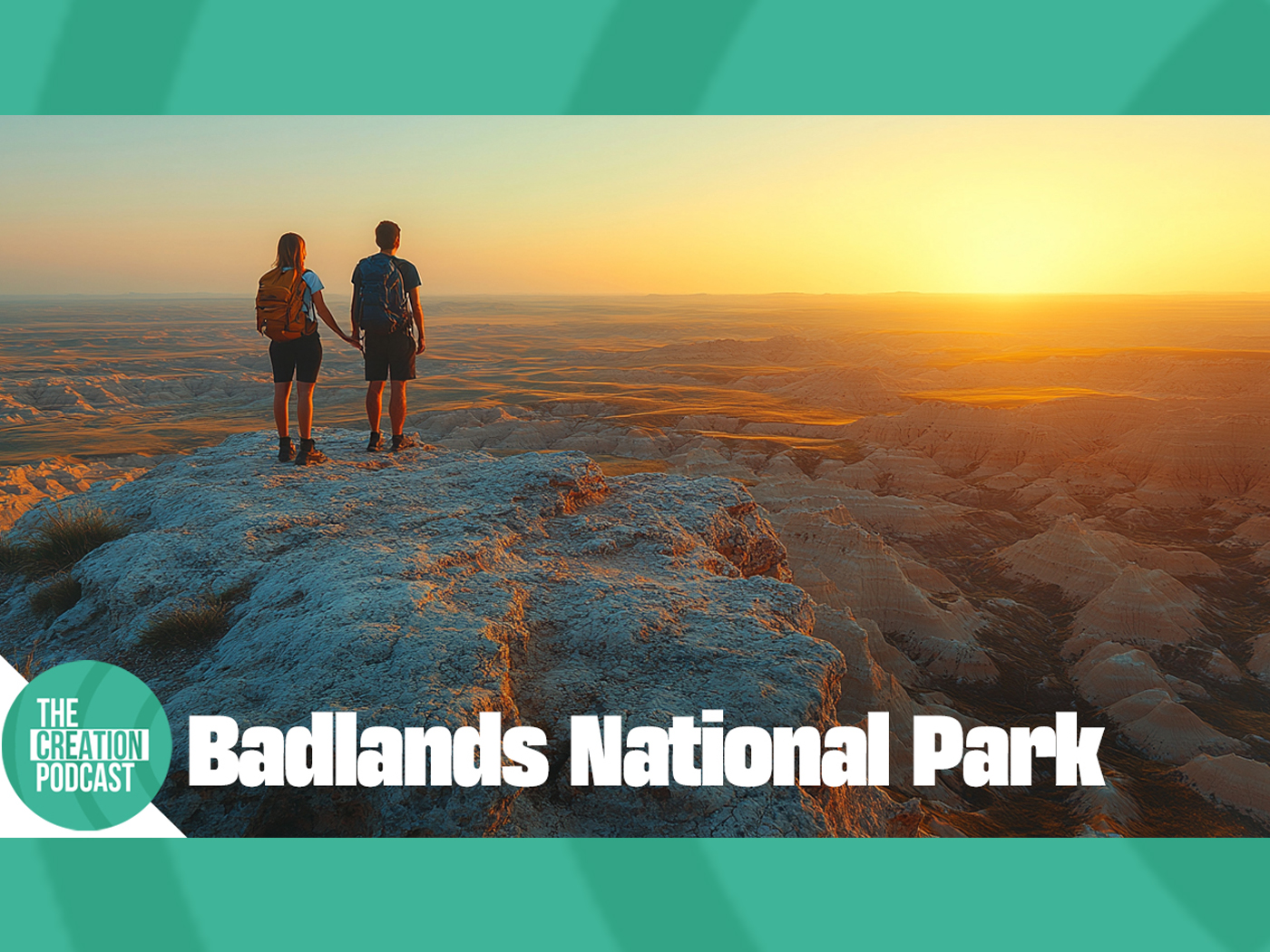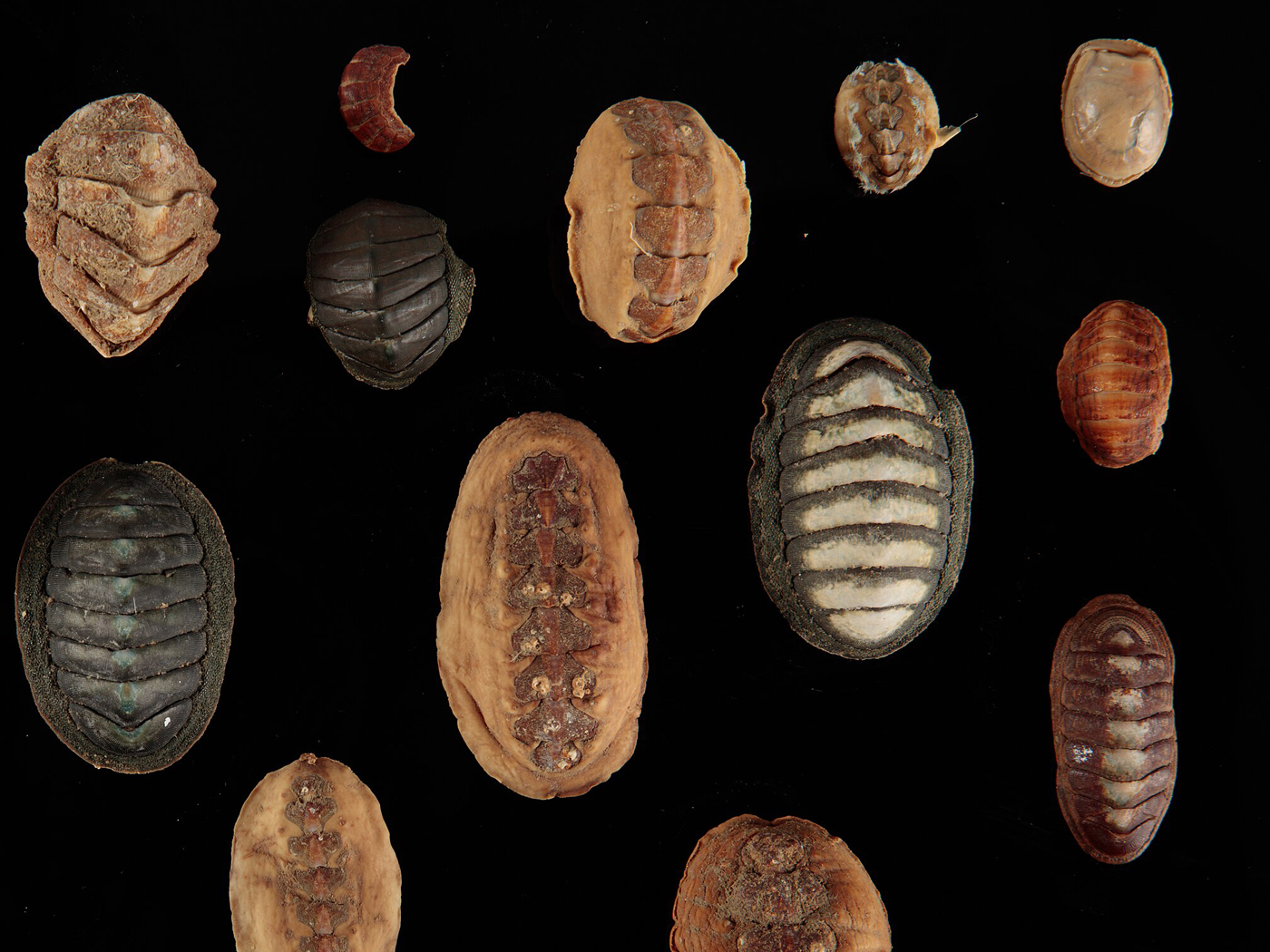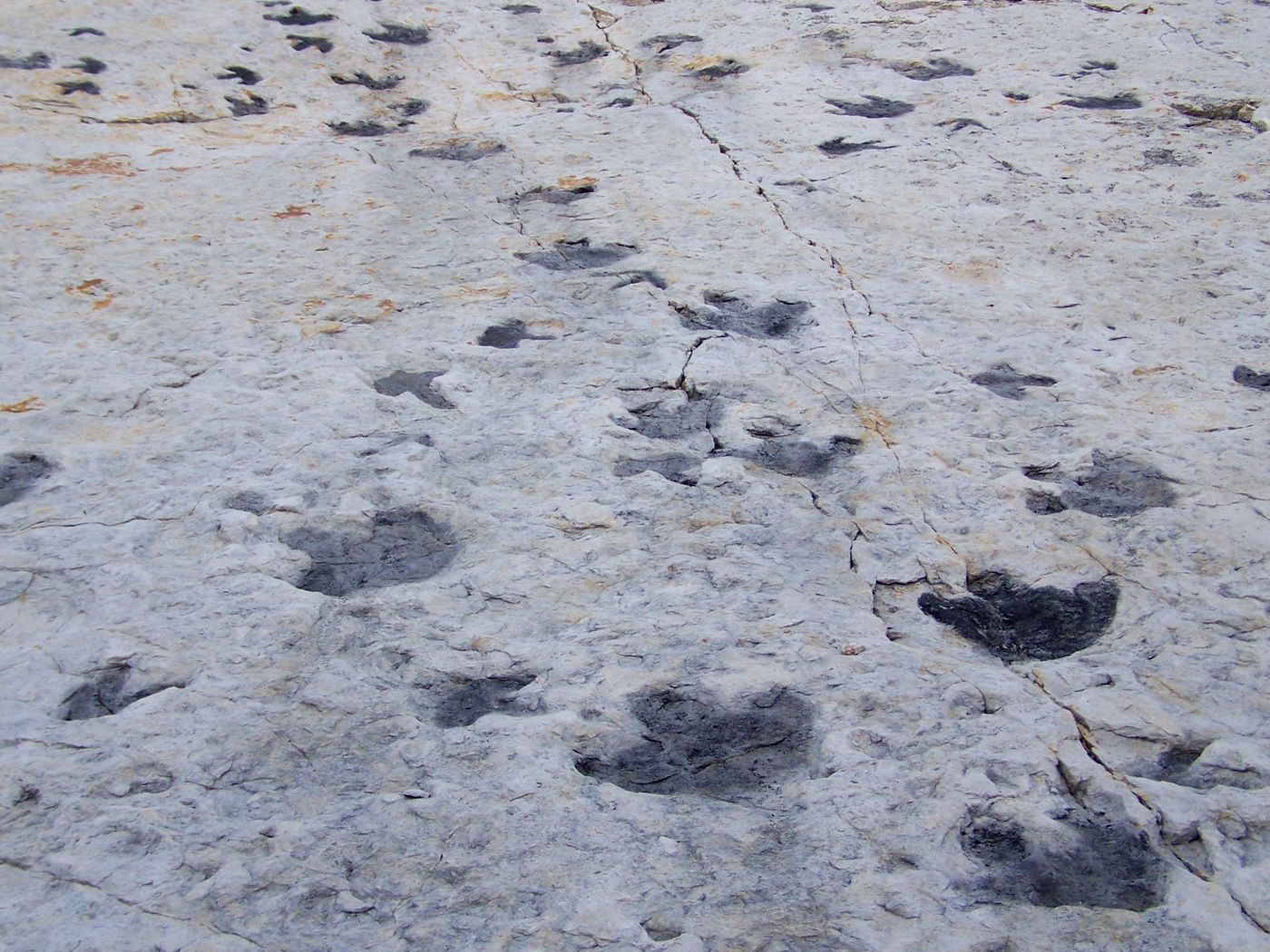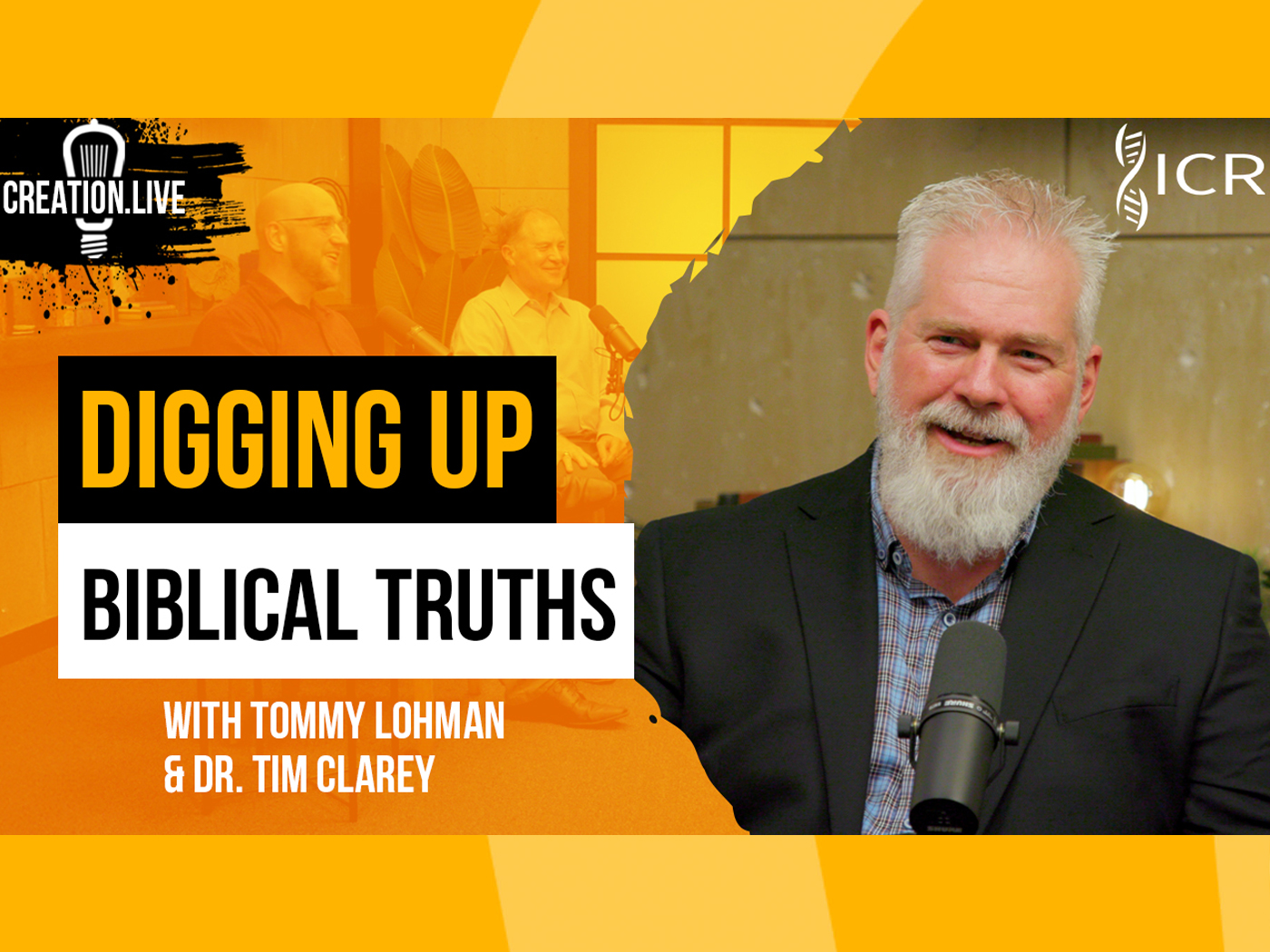When the Voyager 1 spacecraft reached the edge of our solar system in 1990, it turned its camera around and photographed Earth. From such a tremendous distance, the earth appears as a tiny bluish-white grain of sand lost in an ocean of black. This famous image of Earth is named the Pale Blue Dot. From a secular perspective, that is all Earth is—a tiny bit of rock and water in a vast and meaningless universe of chance. But in the Christian worldview, this pale blue dot is the most important planet in the universe.
Properties of Earth
Earth orbits the sun at an average distance of 93 million miles. Since it is convenient to compare other orbits to Earth’s orbit, we refer to this distance as one astronomical unit, or AU. At one AU, it takes Earth one year to complete an orbit. Many units are defined in terms of Earth’s orbital or rotational characteristics. Earth’s solar day is 24 hours, and this is what we normally mean when we use the word “day” without any other qualifiers. Earth takes 23 hours and 56 minutes to rotate once, relative to the stars—a sidereal day.
Physically, Earth’s properties are similar to the other terrestrial planets: Mercury, Venus, and Mars. These are all solid, rocky worlds, orbiting relatively close to the sun. They all have mountains, valleys, rifts, canyons, and craters. Earth is the largest of these four planets in diameter—two and one half times larger than Mercury, just under twice the size of Mars, and only five percent larger than Venus. So, the sizes are not all that different. But despite these similarities, Earth is unique in many ways.
Uniqueness of Earth
Most significantly, Earth is the only planet known to contain living organisms. And they are ubiquitous. In virtually every environment on this planet, we discover creatures that flourish. This stands in striking contrast to the lifeless, barren surface of the other planets. Many of Earth’s other unique qualities seem to be specifically designed to support such life.
Over 70 percent of Earth is covered with liquid water. No other known planet has such an abundance of water. Since water is an essential requirement for all known life, the presence of water on Earth seems to be a key design feature. Earth orbits at just the right distance from the sun for temperatures to allow for liquid water. Earth’s atmospheric pressure is also just right for liquid water. All of these properties seem designed for life.
Earth’s atmosphere has a protective layer of ozone that partially blocks ultraviolet radiation. Such radiation can be very damaging to living tissue; so this too is a design feature. Unlike Venus, Earth has a strong magnetic field. This field deflects harmful cosmic radiation, protecting inhabitants on Earth’s surface. The strength of the magnetic field has been slowly but continually dropping since scientists have been able to measure it nearly two centuries ago. This drop is consistent with Earth’s biblical age of around 6,000 years but is wildly inconsistent with the secular assumption of billions of years.1
Earth is tilted on its axis 23.4 degrees relative to its orbit around the sun. This causes Earth to experience seasons. From late March to late September, Earth is in the part of its orbit where its North Pole is tilted toward the sun. Those of us who live in the northern hemisphere observe that the sun appears higher in the sky than it does at other times, and we experience more hours of daylight. Since we receive greater accumulated solar energy at this time of year, our temperatures are warmer than they are in other seasons. From late September through late March, Earth is in the part of its orbit where the North Pole is tipped away from the sun. During this time, the southern hemisphere receives more heat and light from the sun, while northern hemisphere inhabitants see the sun lower in the sky and experience less than 12 hours of daylight. The seasons are not caused by the slightly elliptical orbit of Earth. On the contrary, Earth is slightly closer to the sun in the northern hemisphere winter.2
This tilt appears to be well-designed for life. If Earth were tilted less, the polar regions would receive less energy, reducing the habitable area of the planet. If the earth were tilted more, the seasons would become more extreme, potentially reducing plant-growing seasons and making the environment less hospitable.
Earth is the only planet known to have plate tectonics. While other planets have tectonic activity as evidenced by volcanoes, their crusts are not divided into plates. Many creation scientists believe that Earth’s continents were connected before the global Flood and moved apart during the Flood year. Geophysicist John Baumgardner’s model of “runaway subduction” explains the global Flood of Noah’s day in terms of catastrophic plate tectonics that apparently took place during the Flood year.3 It appears that God constructed Earth with the built-in capacity to produce and experience a global flood. None of the other planets have substantial liquid water at present. And even if they did, they would have no mechanism for runaway subduction.
The Moon
Earth also has a large natural satellite—the moon. Earth’s moon is the fifth-largest moon in the solar system. It is over one quarter the size of Earth in diameter. No other planet has a moon this large in proportion to the size of the planet. The moon aids life on Earth by inducing tides.4 Tides prevent the oceans from stagnating, and they clean shorelines. The moon also provides light at night—it “rules the night” (Genesis 1:16), being far brighter than any other regular nighttime celestial object. No other planet has such a bright moon in its night sky.
The lunar surface is barren, rocky, and cratered. The moon has highlands that are heavily cratered. It also has lower, relatively smooth regions called maria. These maria (Latin for “seas”) appear as the large dark regions in images of the moon. Apparently, they are large impact basins that have filled in with magma, erasing any previous record of cratering. Curiously, the maria are almost entirely on the Earth-facing side of the moon where they cause the visual impression of the “man in the moon.” The moon has no substantial atmosphere, so its sky remains black even when the sun is up. Without an atmosphere to redistribute thermal energy, the temperature on the moon can exceed 200°F during the day and drop to -280°F at night.
The moon rotates slowly, taking 27.3 days to rotate once. This is also exactly how long it takes the moon to orbit Earth. For this reason, observers on Earth can only ever see one side of the moon. Some people have the impression that the moon does not rotate since we always see the same side. But this isn’t so. If the moon did not rotate (relative to the stars), we would see different sides of it as it orbits around Earth. The fact that the rotation and revolution of the moon have exactly the same period is called tidal locking.5 Such a configuration is very stable. If the moon did not rotate at the same rate it revolved, Earth would induce land-tides on the moon, forcing it eventually to become tidally locked. All large and many small moons in our solar system are tidally locked.
The Uniqueness of the Moon
The moon has a number of distinctive characteristics. It is both 400 times smaller and 400 times closer to Earth than the sun is. This means that the moon and sun have about the same apparent size in our sky on average.6 This makes total solar eclipses possible. Earth is the only known planet that can experience eclipses where its moon so precisely covers the sun.7 This has made possible the discovery of the solar chromosphere. The chromosphere can only be seen by eye during a total solar eclipse.8
The moon orbits very close to the ecliptic—the plane of Earth’s orbit around the sun.9 All other large moons in the solar system orbit in the plane of their planet’s equator except Triton, which orbits neither in the ecliptic nor the equatorial plane of its planet. This makes solar and lunar eclipses more common on Earth than they would be if the moon orbited around the planet’s equator as other moons do. Yet, because the moon does not orbit exactly in the ecliptic, we do not have eclipses every month.
A Young Moon
As the moon induces tides on Earth, the planet rotates faster than the moon orbits and the tidal bulges get “ahead” of the moon. They then pull forward on the moon, causing it to gain orbital energy and move away from Earth. The effect is small but measurable—the moon moves away from the Earth by about 1.5 inches every year. The recession effect would have been larger in the past, because if the moon were closer to the earth, the tides would be larger. If we extrapolate this effect into a hypothetical past, we find that the moon would have been touching Earth 1.4 billion years ago.10 So, Earth and the moon cannot be older than that. Yet secular scientists claim that Earth and the moon are over four billion years old. The evidence from the recession of the moon is inconsistent with the secular age estimate. Of course, 6,000 years ago, the moon would have been only 730 feet closer to Earth. So, lunar recession is not a problem for the biblical timescale.
Conclusion
Of the planets in our solar system, Earth is uniquely designed for life, and the moon is uniquely designed to aid life on Earth. God chose to spend five of the six days of creation working on Earth, making it just the way He wanted it to be. All the other planets were created in one day—Day Four (Genesis 1:14-19).11 It is as if God took extra care to create Earth.
Astronomers have now discovered hundreds of planets orbiting other stars, and it is likely that billions more remain undiscovered. Yet, of all the planets in the universe, Earth is where God chose to place the creatures whom He made in His own image. It is our planet where Almighty God, out of His great love for us, took on human nature, died our death, and rose in glory. Not bad for a pale blue dot!
References
- Based on physics’ first principles, we would expect this to be an exponential decay. Current measurements are consistent with this. Secularists are forced to assume that the magnetic fields of planets are somehow “recharged” in a magnetic dynamo cycle. But such models are problematic. So far, the secularists have not demonstrated that magnetic fields can actually be maintained over billions of years.
- Earth reaches perihelion (its closest point to the sun) around January 3, at which time our planet is 91.4 million miles away from the sun. In early July, Earth reaches aphelion (its farthest distance from the sun) at a distance of 94.5 million miles.
- Baumgardner, J. R. 1994. Runaway Subduction as the Driving Mechanism for the Genesis Flood. In Proceedings of the Third International Conference on Creationism. R. E. Walsh, ed. Pittsburg, PA: Creation Science Fellowship, 63-86.
- The gravity of the sun also contributes to tides. But the effect from the moon is much stronger.
- Tidal locking is the simplest example of a resonance. A resonance occurs when two periods (such as an orbital period and a rotation period) can be expressed as a simple fraction. Tidal locking is a 1:1 resonance.
- The moon’s orbit is elliptical. So, the angular size of the moon can change by a few percent in our sky. The same is true of the sun since Earth’s orbit is also slightly elliptical. Therefore, sometimes the moon will appear slightly larger than the sun and other times somewhat smaller.
- Faulkner, D. 1998. The Angular Size of the Moon and Other Planetary Satellites: An Argument For Design. CRS Quarterly. 35 (1).
- It is unsafe to look at the sun without eye protection, except at the moment of totality during a total solar eclipse.
- The plane of the moon’s orbit is tilted only 5 degrees relative to the ecliptic.
- Secular attempts to ameliorate this problem (such as supposing that the recession rate is anomalously fast at present) largely involve denying the secular principles of uniformitarianism and naturalism. But without those principles, there would be no reason to suppose an old age for the earth or moon in the first place.
- The Hebrew word kowkab is translated as “stars” in Genesis 1:16 and includes planets that appear as wandering stars in our night sky. Hence, all planets except Earth were created on Day Four along with the sun, moon, and stars.
* Dr. Lisle is Director of Physical Sciences at the Institute for Creation Research and received his Ph.D. in Astrophysics from the University of Colorado.




